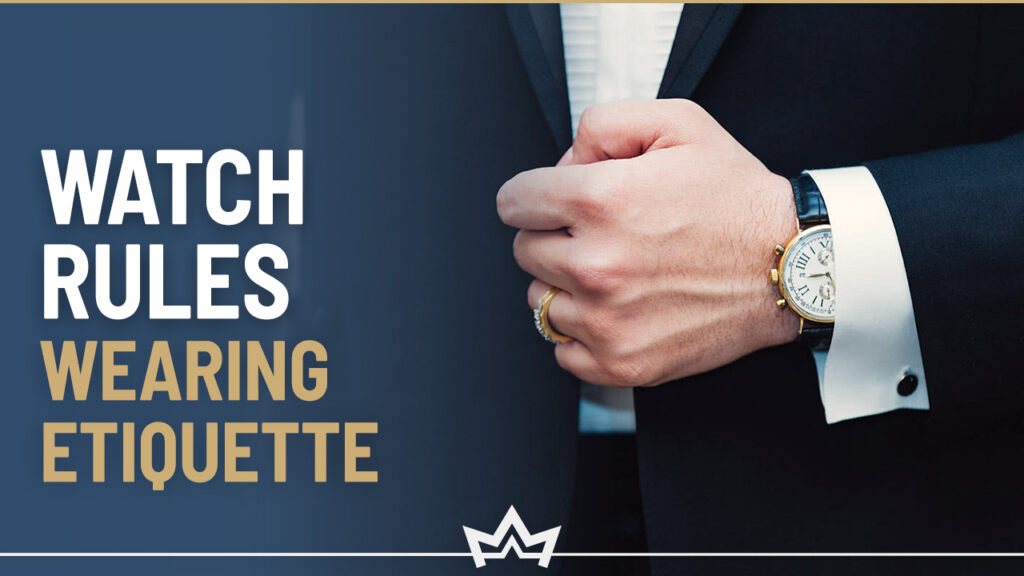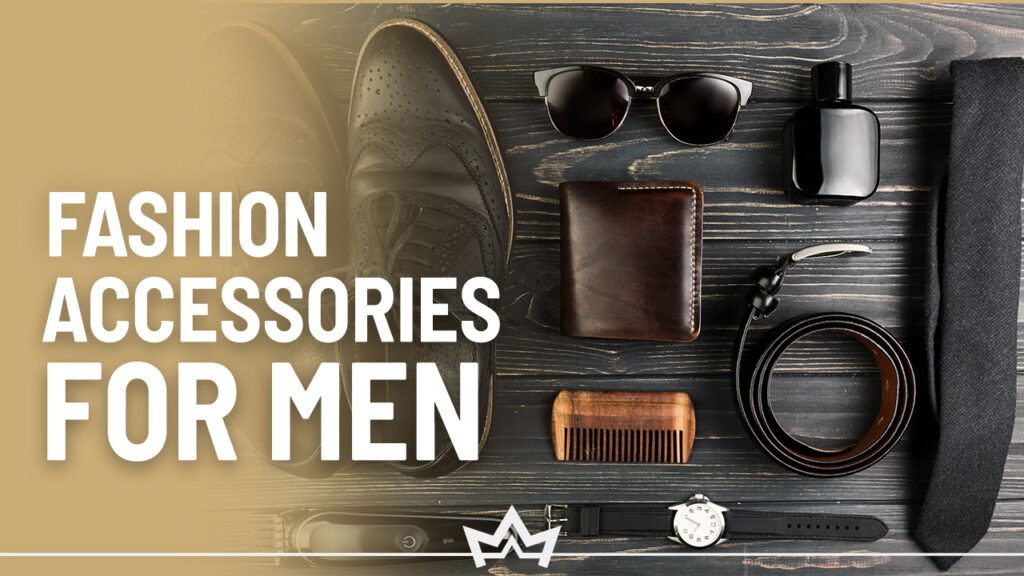Learning how to wear a watch seems like a simple task.
But as any man who tried to wear a sports watch with a tux will testify, that’s not always true.
There are watch-wearing etiquettes that go along with every outfit.
Maybe not as obvious as buttoning your blazer, but still, many watch rules are worth knowing for a discerning style.
Wear the Watch Beside the Wrist Bone
Wearing a watch that slides down your wrist is absolutely wrong.
Instead, you should wear a watch just beside your wrist bone.
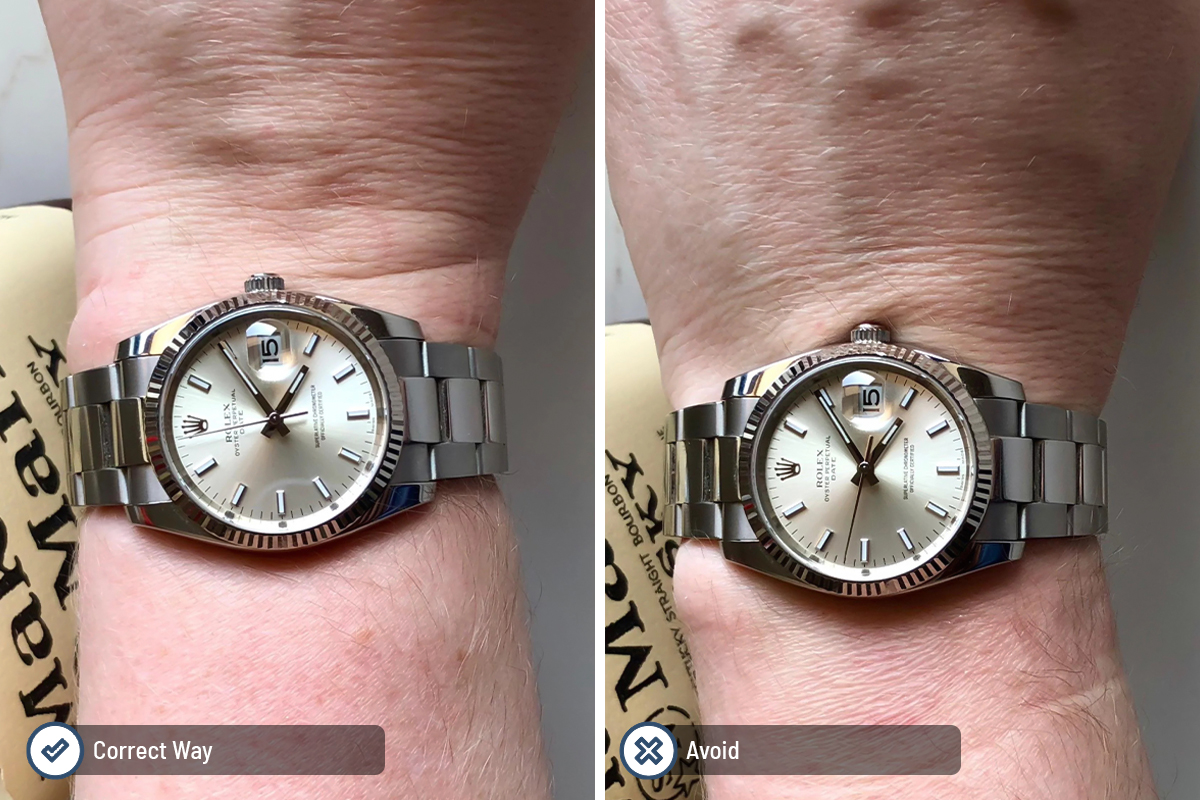
According to the watch-wearing etiquette, this will be an inch (2-3cm) below the bump on the lateral aspect of the wrist (ulna bone).
There are many reasons why this is the sweet spot to wear a watch.
First, the watch will fit you perfectly, making you feel comfortable.
Plus, it will avoid unnecessary strain on the watch band, impacting the longevity of the watch.
From a style perspective, wearing a watch beside the wrist bone will keep everything in proportion.
Your dress shirt cuff can cover half the watch face without overdoing it.
That way, wearing a watch with a suit will also be seamless.
You Can Wear the Watch on The Hand that Suits You
Most guys wear a watch on their left hand. Ever wondered why?
It’s because there’s an unspoken rule to wear a watch on the non-dominant wrist.
However, this rule is more of a guidance than a faux pas.
Even if you’re right-handed, wearing a watch on the right hand is perfectly fine.
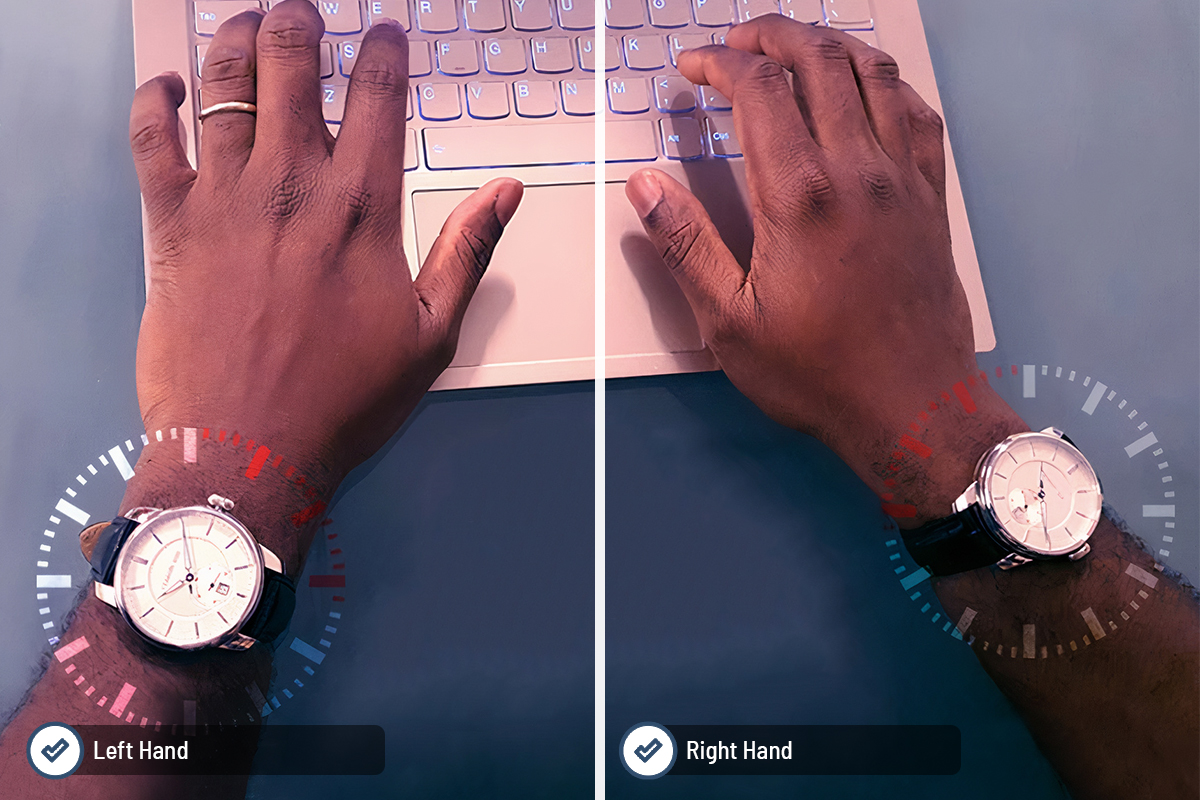
It’s a matter of personal preference and comfort rather than sticking to old-school rules.
If you still feel like you’re pushing the boundaries of good taste, take inspiration from influential people.
David Beckham, for example, wears watches on both his left and right wrist.
Also, Russian President Vladimir Putin has been seen wearing a watch on his right hand (even though he is right-handed).
The whole point is your style and comfort should guide which hand you should wear a watch, and nothing else.
Find the Right Watch Case Size for You
I don’t know about you, but Ben 10 Omnitrix was my dream childhood watch.
Little did I know that many guys never came out of this and still wear watches bigger than their wrists.
Don’t be that guy. Instead, choose the watch case in proportion to your wrist.
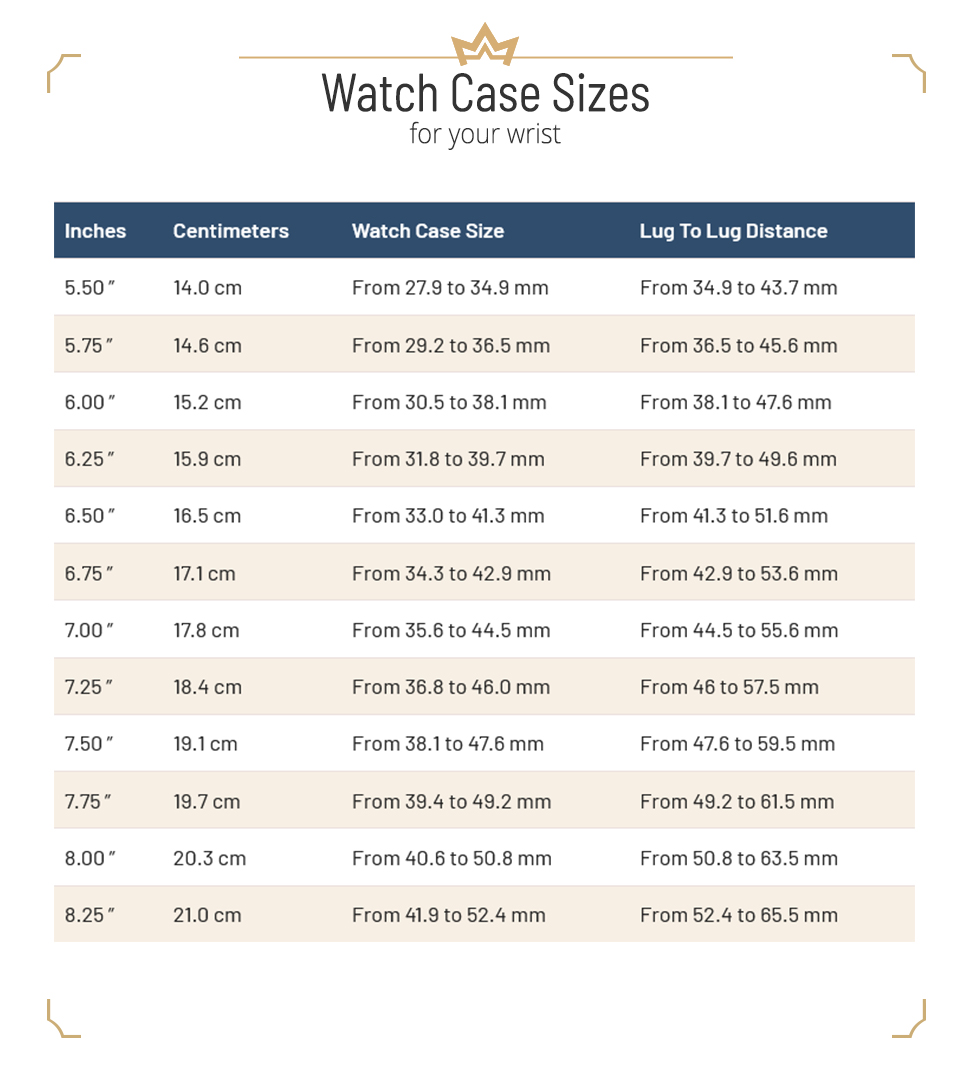
The 39-42 mm is the standard watch size for an average 7-7.5 inch wrist.
If you have smaller wrists, wear a watch with a smaller case size. Almost every watch, even G-shocks, comes with different case sizes.
It’s always a good practice to measure your wrist before buying a watch.
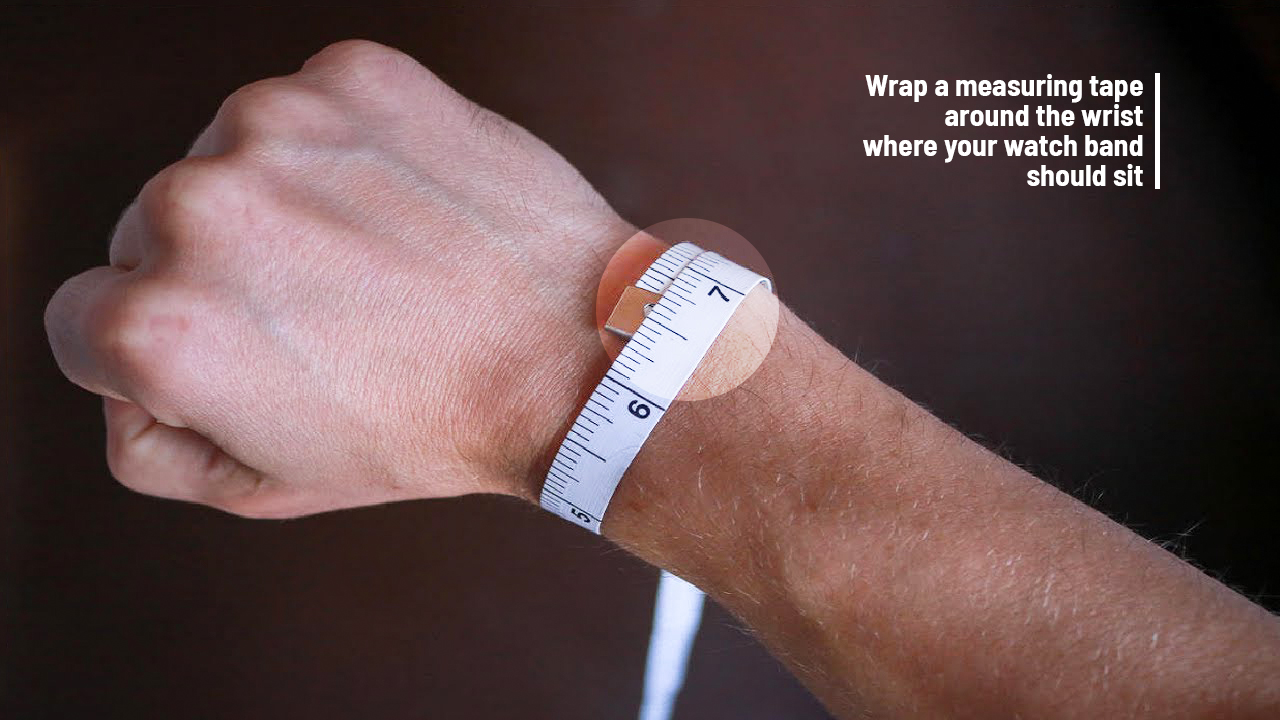
If you ever get confused about choosing the right case size, remember it should cover three-quarters of your wrist.
Pair The Right Watch with Your Outfit
It goes without saying, but your watch should match your outfit. There is a reason different watch types exist in the first place.
A good rule of thumb is to match the watch and the outfit’s formality.
If it’s a black-tie event, dress watches are the best option.
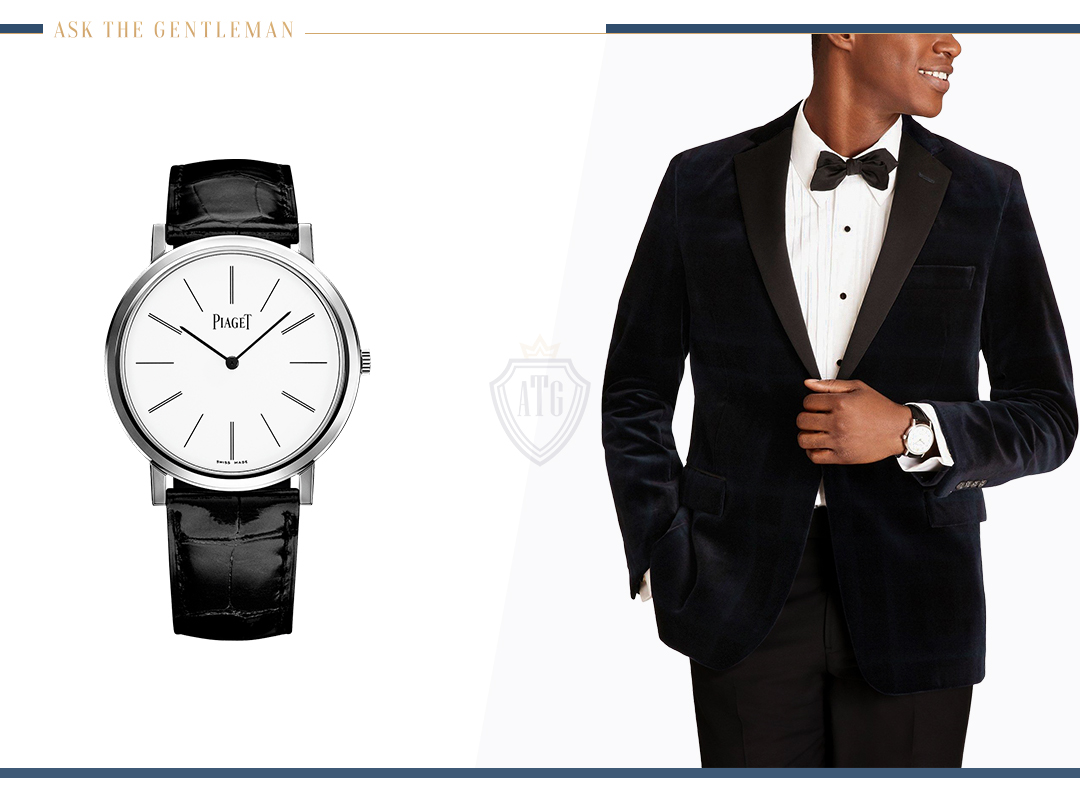
However, with a more relaxed dress code, you can experiment with sports watches like pilot and dive watches.
But how would you determine if a watch is appropriate for a particular outfit?
This will require an understanding of the dress code and watch types.
Once you know this, the menswear golden principle of “If it looks right, it is right” will help you.
Also, be mindful of wearing the same watch with every outfit.
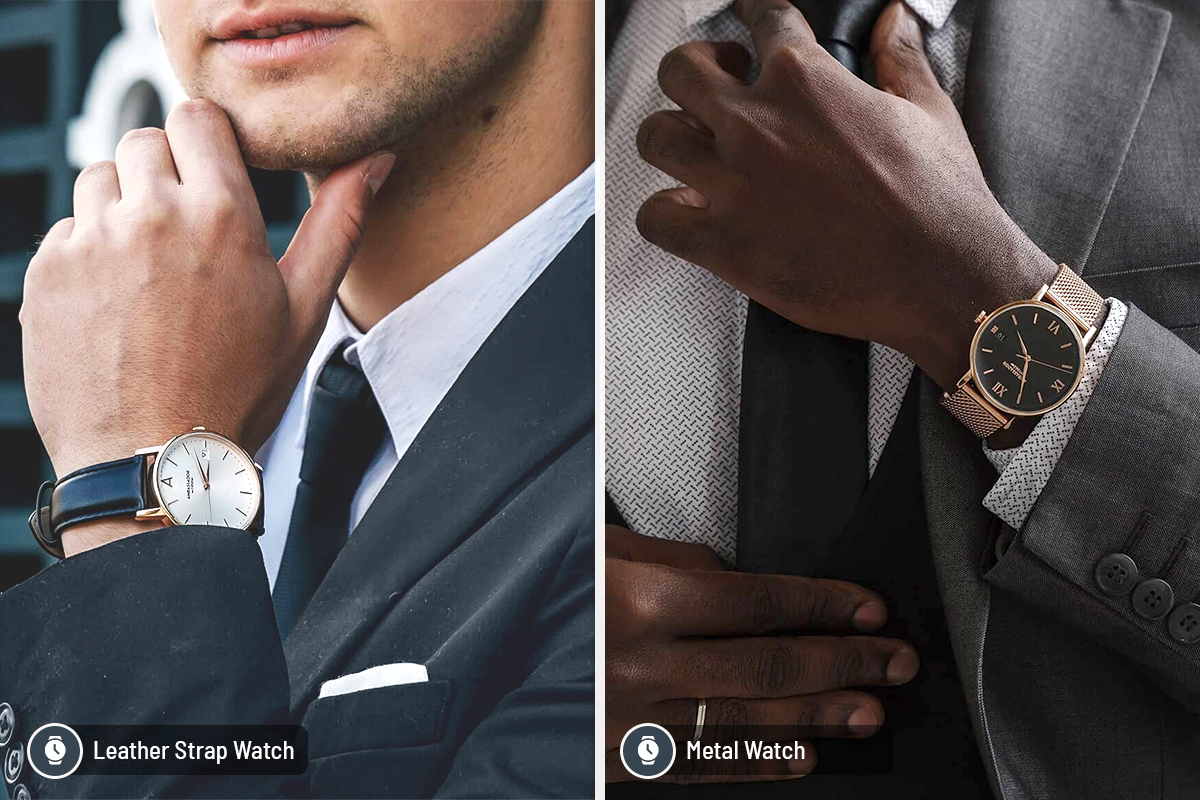
Yes! According to prominent watch brands such as the Exquisite Timepieces, GADA watches exist.
But I recommend a three-watch collection of a dress, casual, and a dive watch as the safe bet.
Stick to Formal Watches when Wearing a Suit
Watches that go with a suit should be subtle and understated. It’s that simple.
Also, understand that a suit, at its core, is a formal garment. It does the hard work of preparing you for that dressed-up energy.
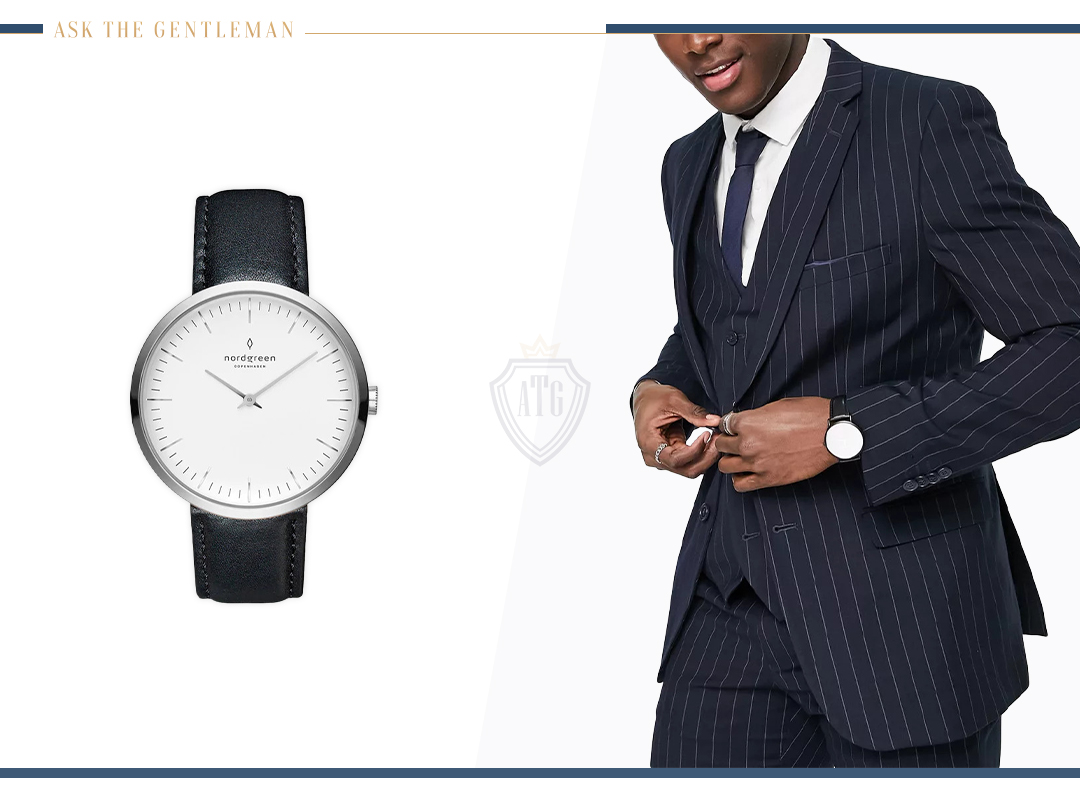
So, why mess the whole thing with something flashy on the wrist?
With that in mind, dress watches are the best option to wear with a suit.
These are elegant and exquisite and don’t call for attention.
In most cases, you should avoid wearing casual, sports, or a smartwatch with a suit.
However, when dressing down a suit or wearing summer suits like linen, there is room to wear casual watches.
Even then, the suit should be the focus of the outfit, not the watch.
Dial Color Matches the Outfit
Except maybe for watch enthusiasts, a change in dial color means an entirely different watch.
Take a look at Tudor Black Bay in white and navy dial, for example, or Nomos Club Campus in white and black dial. They kind of feel like different watches.
So, the dial color altogether changes the look of the watch.
This comes into play when you try to color-coordinate your watch with the rest of your ensemble.
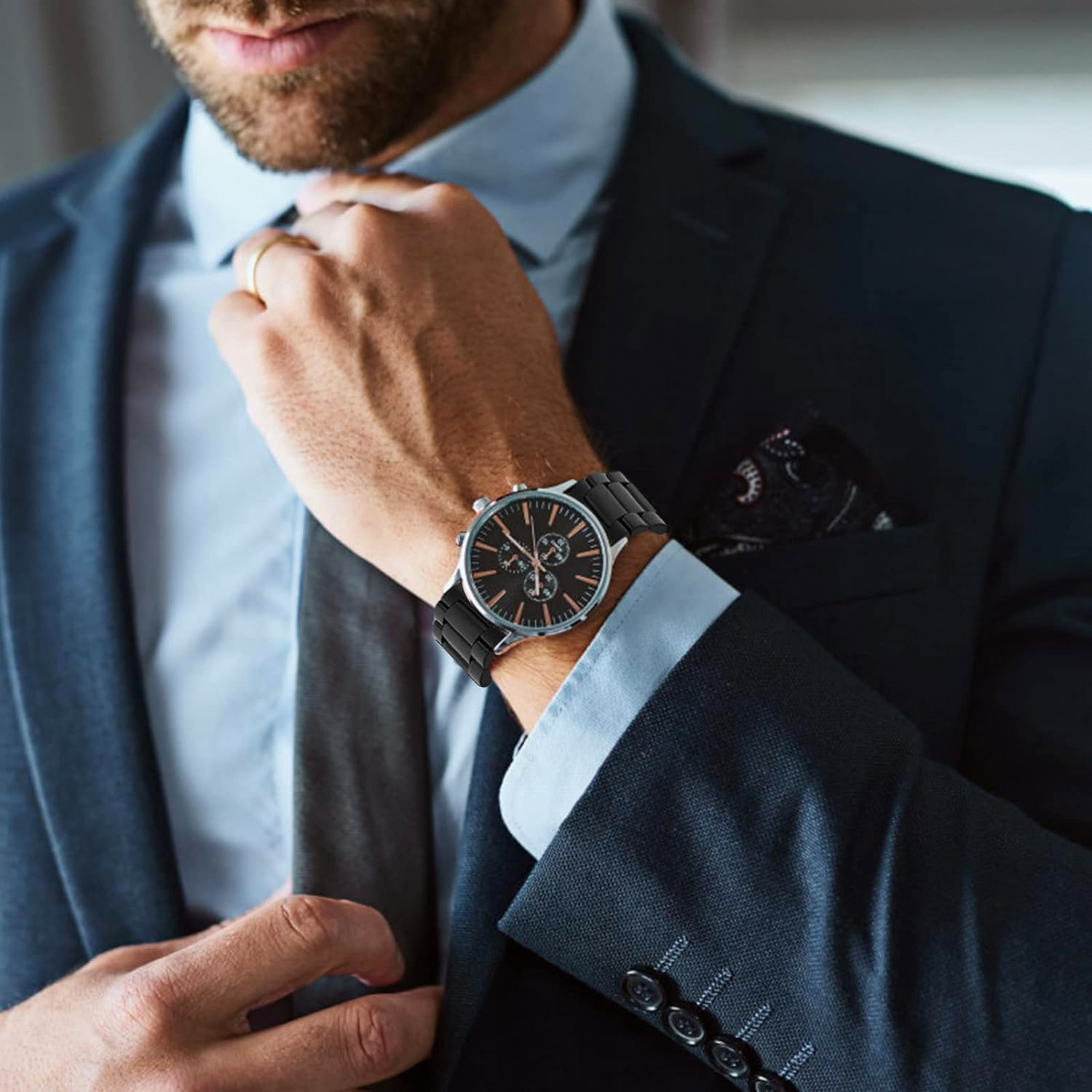
For example, an orange or green dial will stick out like a sore thumb with an all-black outfit.
Therefore, I recommend wearing dark-dial colors with dark attire.
On the other hand, go for pastel dials with light-colored clothes.
Skip Flashy Watches Altogether
You should not wear flashy, bust-down watches every day. Sorry to all hip-hop fans out there.
In fact, I recommend avoiding such flashy timepieces altogether.
The reason is that these watches come up as “trying too hard” to get the attention.
This is against the gentlemanly idea of staying subtle and doing more with less.
A luxury watch doesn’t need to be too flashy. Believe me! People will notice if you just wear the watch right.
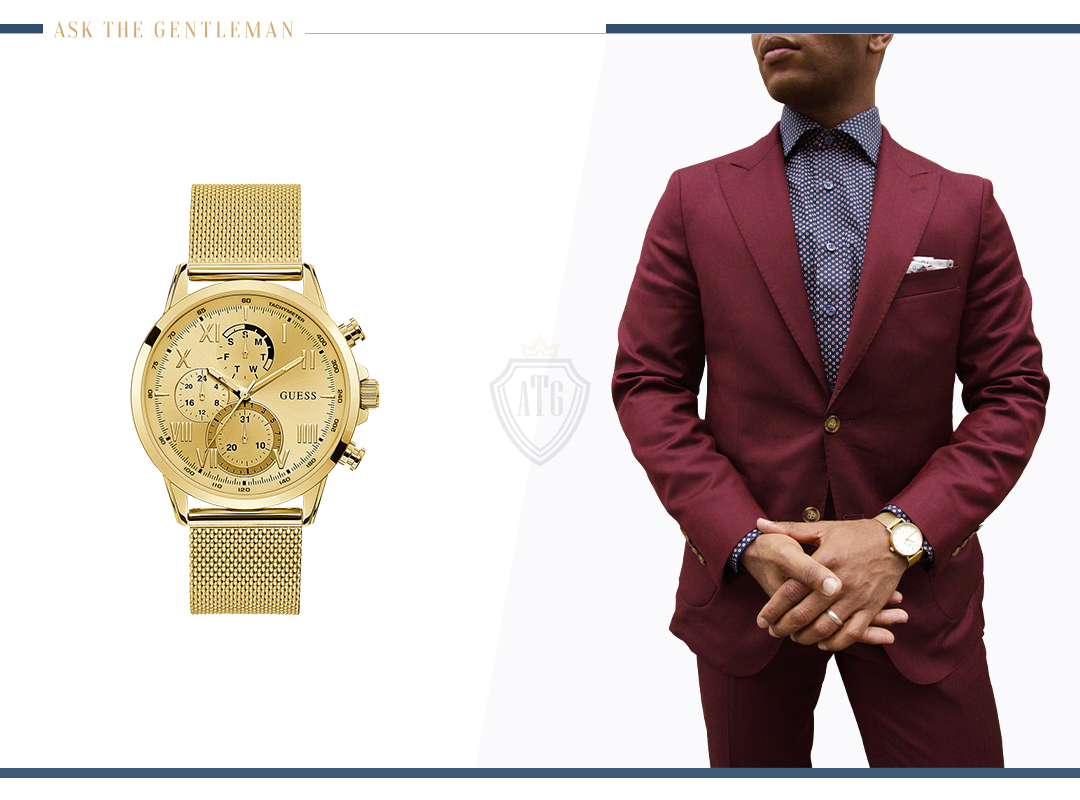
You might sometimes crave a Tony Soprano flair by wearing something bold on the wrist.
In such cases, I recommend wearing a gold watch. It will provide that vintage charm and is the perfect alternative to bling watches.
Your Metal Watch Must Match Other Metals on Your Outfit
If I define watch-wearing rules by one theme, it will be coordinating your watch with the outfit.
And that also applies even when wearing a metallic watch.
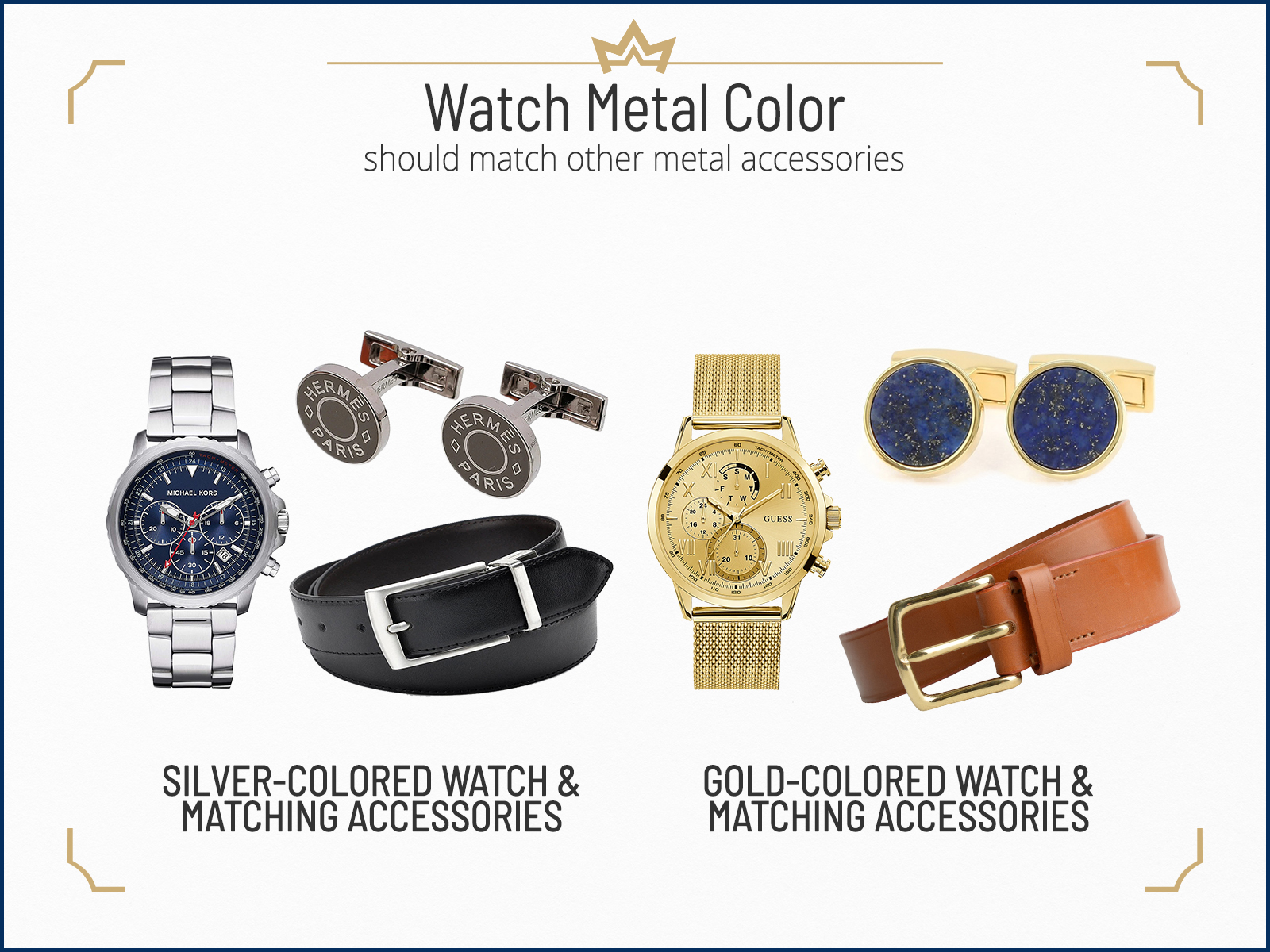
The goal should be to create a consistent look with metals complementing each other.
For instance, if you are wearing a stainless steel watch, wear matching cufflinks, rings, belts, and shoe buckles.
The same goes for gold and silver watches.
Note that watches can also be made of materials like Titanium, Ceramic, and Diamond-like carbon.
Make sure the base shade of your watch matches with other accessories. Nothing else matters.
Your Leather Watch must Complement the Shoe
There are no two ways about it; leathers in an outfit should complement each other.
This means that your watch band, belt, and shoes all must be of the same shade.
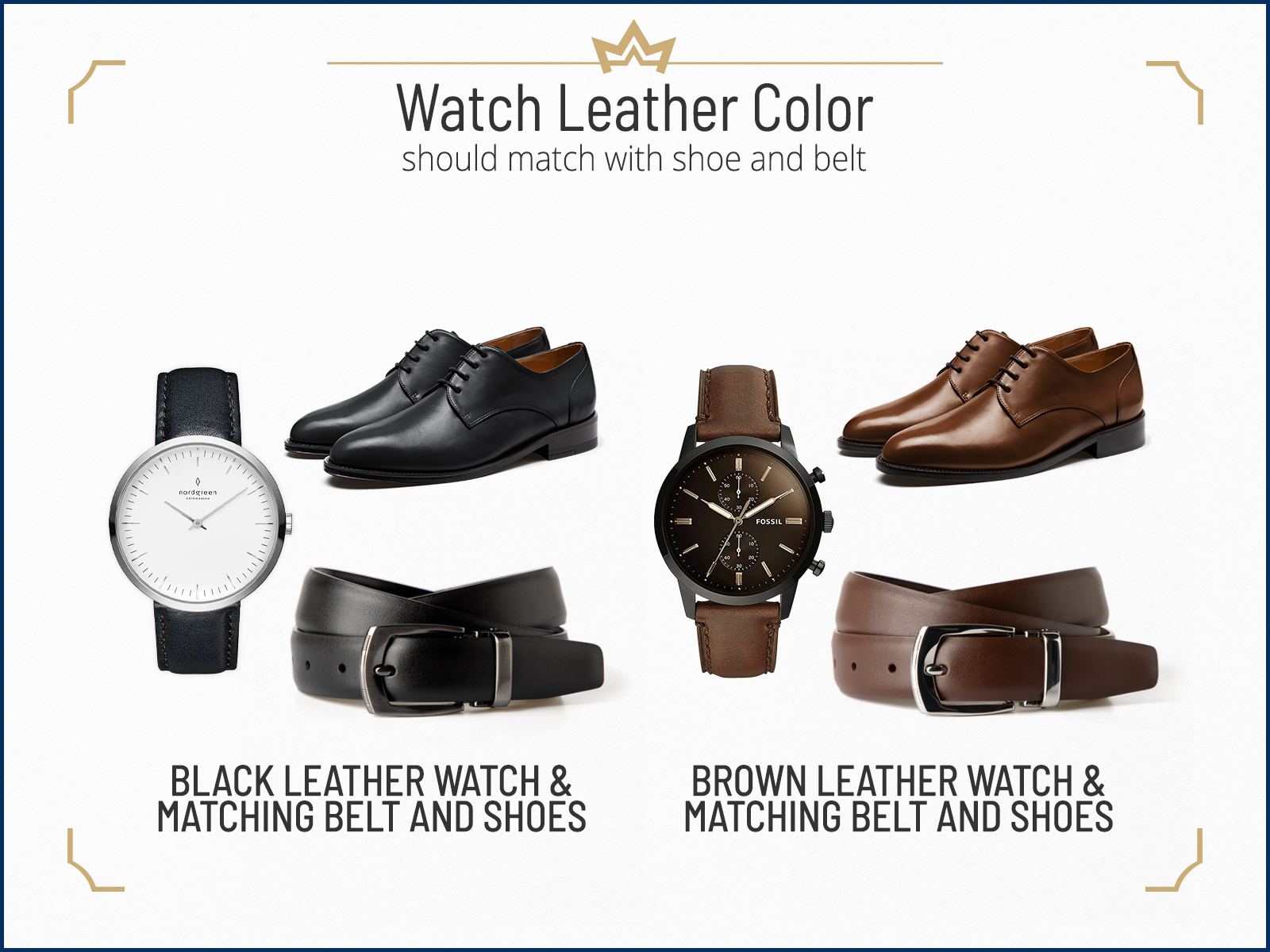
You can go a step ahead and even match the textures and finish of the leather.
Like matching black opera pumps with matching patent leather straps.
Note that this rule of strictly matching a leather watch with shoes is more significant in formal settings.
And “complement” becomes the buzzword as you move down the dress code spectrum.
For example, in a business-casual setting, wearing a medium brown leather watch is perfectly fine with dark brown derby shoes.
With casual leather sneakers, you match the leather watch with the belt and not the shoes.
Finally, all these matching rules apply to other watch bands like Zulu, NATO, and Perlon.
Don’t Check Your Watch in a Conversation
One of the reasons I adore watches is that they make you look attractive.
With a bit of aggregation, you can also say that a nice watch is a conversation starter.
However, no matter how beautiful your watch is, never check it constantly during a conversation.
The implications are many!
In a business meeting, checking your watch repetitively will mean you’ve somewhere else to go.
On a social event or date, it’s just disrespectful to the other person in the conversation.
Similarly, checking your watch in an interview will mean you’re not confident enough.
Be Respectful When Admiring Other Men’s Watches
I can’t forget the story told by Kevin O’Leary about AP Royal Oak Jumbo.
So, Kevin met this guy on the flight, and both being watch enthusiasts, instantly started having a conversation about the watch.
The guy asked Mr. Wonderful for an AP Royal Jumbo to wear on his wrist, but Kevin Denied it.
You might feel odd listening to this, but that’s how it goes.
One of the watch-wearing etiquette rules is that you do not touch the other guy’s watch.
Therefore, it’s best to appreciate the watch from a distance. It’s a basic watch etiquette.
If, however, you see a watch that you really like, politely ask the person to have a look at it.
But don’t take it rudely, even if they decline. For many men, watches are the only jewelry they own and almost always have sentimental value.
Personally, if asked, I wouldn’t mind handing over my watch. But it’s just my preference and not how most people like it.

